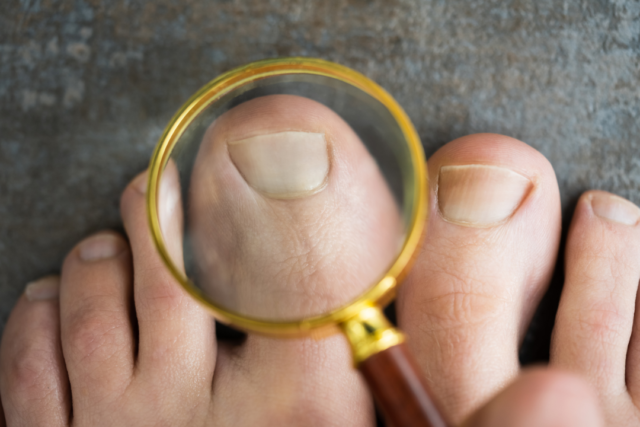
Just like you’re reading this article now, for many people with an ingrown toenail, particularly if it’s their first time with one, they’ll also head online to seek out the best way to treat an ingrown toenail. And after hearing some interesting feedback from our patients in terms of their online search results, we decided to jump online to have a look ourselves – and set the record straight on what we found. And you can bet we were surprised! Here are seven treatment options presented by an article – and our thoughts on these findings.
“Soak the affected foot: Soaking the affected foot in warm water several times a day can help reduce inflammation and ease pain”
While regularly soaking the foot that has your ingrown toenail can help relieve your pain, there are two misconceptions here: first, this effect is very temporary. Next, it doesn’t actually treat, fix or resolve an ingrown toenail. The ingrown portion of your toenail still remains embedded in the surrounding skin, and so the pain and problem will continue to bother you – and is likely to continue to get worse over time.
“Wear comfortable shoes: Wearing comfortable, non-restrictive shoes can help reduce pressure on the affected toenail”
While we always support the advice to wear comfortable shoes, this advice also doesn’t fix the problem of your ingrown toenail. It can help you feel more comfortable and reduce your immediate pain – but it doesn’t remove the painful nail spicule from the skin. This advice also doesn’t clarify what shoes you should wear, beyond being comfortable and being non-restrictive. Specifically, you want shoes that either have a big, spacious toe box for your toe to sit freely in without being pressed on, or ones with an open-toe region.
“Lift the nail: Gently lifting the edge of the ingrown nail with a small piece of cotton or dental floss can help it grow out straight”
If treating an ingrown toenail was as simple as just “lifting” the ingrown piece of the nail out of the skin, then we wouldn’t have a whole clinic dedicated to treating this painful and frustrating condition – and the pain and frustration is often linked to not being able to do anything to ease the pain (beyond temporary medicated relief) at home. When cotton is used to lift the nail, in most cases the offending nail spicule is still left in the skin, continuing to cause ongoing pain and irritation, even if the severity is somewhat reduced. It also doesn’t stop the ingrown nail from recurring in the future.
“Apply antibiotic ointment: Applying an antibiotic ointment to the affected area can help prevent infection”
While it’s true that antibiotic ointment can help prevent infection, which can help ease symptom severity, this also does not fix the problem of your ingrown toenail. This is because antibiotics don’t remove a nail spicule of the skin and don’t treat the underlying cause of an ingrown toenail. We’ve written specifically about antibiotics here.
“Take pain relievers: Over-the-counter pain relievers such as paracetamol or ibuprofen can help reduce pain and inflammation”
It is correct that pain relievers can help reduce pain and inflammation, but once again, offering this temporary relief from your pain and symptoms does not fix or treat your ingrown toenail. The nail spicule still remains deeply embedded in the skin, and only growing further in as time passes.
“See a podiatrist: A podiatrist can trim or remove the ingrown nail and may prescribe antibiotics if there is an infection”
Yes! You absolutely should see a podiatrist for an ingrown toenail. The first piece of advice we can agree on – and yes we can remove your ingrown toenail, though we won’t prescribe you antibiotics for an infection. For those that do need antibiotics, which many of our patients don’t, these are prescribed only by your GP.
“Surgery: In severe or recurrent cases, surgery may be recommended to remove the ingrown nail and prevent it from growing back”
Again, ingrown nail surgery is good advice. This is called a Partial Nail Avulsion (PNA) and involves your podiatrist removing a small section of the nail (including the ingrown portion with the nail spicule) so that you no longer have the nail piercing your skin. We can also apply a chemical to prevent the ingrown edge of the nail from returning. We recommend this for both severe cases, and when this isn’t your first time having an ingrown toenail. So this one is spot on – finally!
So the morale of the story? Don’t trust everything you read on the internet – unless it’s from qualified health professionals that specialise in treating the exact problem you have. If you’re currently struggling with an ingrown toenail, book your appointment with our podiatrists by calling us on 09 523 2333 or book online here.
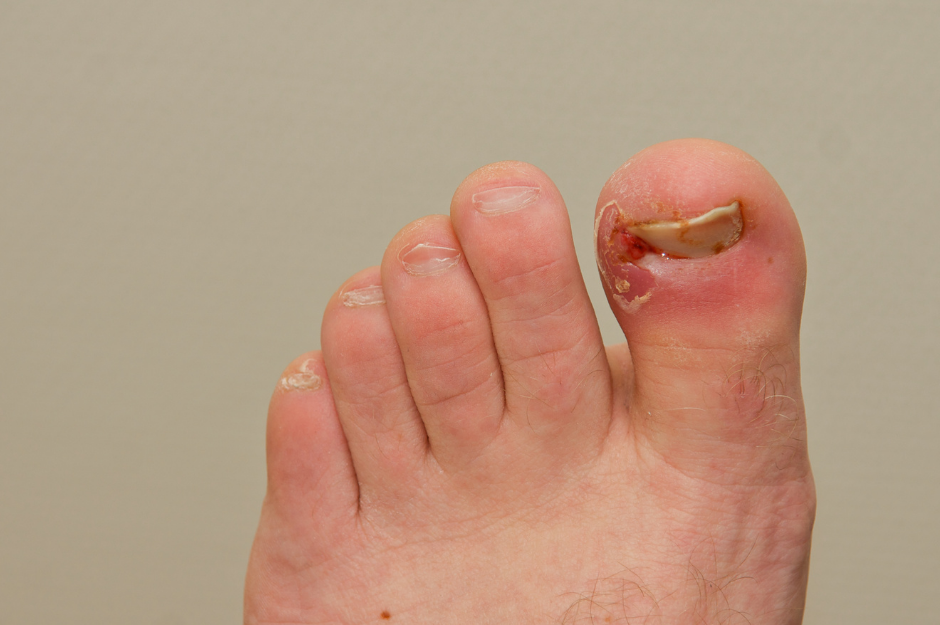
- Will antibiotics fix an ingrown toenail?
- If I’ve had an ingrown nail removed, should I have antibiotics?
These are all good questions, and ones we get asked often by our patients with painful – and often recurring – ingrown toenails. Today our podiatrists share what you should know about ingrown toenails and antibiotics.
Will Antibiotics Fix An Ingrown Toenail?
No, antibiotics are not going to fix an ingrown toenail because they are not a treatment for ingrown toenails. Antibiotics describes a medicine that helps destroy microorganisms like bacteria that have caused an infection in the body, and hence are doing harm. An ingrown toenail on its own is not an ‘infection’ – it’s a piece of nail that has pierced the skin surrounding it at the toe, and has become painful, and often red and swollen. This pain and other symptoms will continue as long as the nail remains embedded in or penetrating the skin – and antibiotics do not work to remove this or fix it.
What antibiotics can do is, if an infection has developed in the area of the ingrown nail, then the antibiotics can help resolve the infection. As infections also lead to swelling and pain, this can help with settling the symptoms and giving some much needed relief. What’s important to know is that just because you have an ingrown nail, does not mean that you have an infection too. Antibiotics should be reserved for confirmed infections, not on a whim or ‘just in case’, as frequent and inappropriate use of antibiotics can lead to the bacteria becoming resistant to the antibiotics, and so not working as effectively when you actually do need them. You should only take antibiotics when and if prescribed by your doctor, always finish the full course, and if you have any tablets remaining, discard them.
If I’ve Had An Ingrown Nail Removed, Should I Have Antibiotics?
Similar to the above, no, you do not need antibiotics simply from having an ingrown toenail removed, unless you have an infection that requires antibiotics. Signs you have an infected ingrown toenail include:
- Clear or yellow discharge coming from the side of the nail
- Bleeding from the side of the nail
- Swollen, overgrown or inflamed tissue around the edge of the toenail
- If an abscess develops, you’ll notice a yellow/white fluid-filled pocket
- Redness around the side of the nail
Remember – you may also have some redness and swelling simply from the nail piercing the skin, without having an infection present.
When our podiatrists treat ingrown toenails, we do everything we can to help minimise your risk of infection. When performing ingrown nail surgery, we prepare your toe and foot by applying an iodine solution, use only sterilised instruments, and apply incredibly high safety and hygiene protocols, dressing your toe with multiple sterile dressings and a protective cover after removing your ingrown nail. We always provide careful redressing instructions and foot care advice, including a take-home dressing pack, so you can continue to take good care of your foot at home. At your follow up appointment 2-3 days after your procedure, we always monitor for any signs of infection and advise you if we think you may need antibiotics.
In some cases, your doctor may recommend antibiotics as a preventative measure due to an existing condition you have, including if you are particularly vulnerable to infections. Always follow your doctor’s advice and take any prescribed medications as directed.
If My Ingrown Nail Is Infected, Do I Need To Clear The Infection Before Treatment?
This really depends on the severity of your infection and your personal circumstances, and our podiatrists will assess this at the time of your appointment. A big part of treating an ingrown toenail and helping prevent re-infection is getting the ingrown nail out so the wound that it has created can close – and therefore not be vulnerable to another infection.
Here at the Auckland Ingrown Toenail Clinic in Remuera, we treat ingrown nails in one of three ways:
- Conservative nail care – for first time ingrown toenails, we remove the offending nail spicule if it doesn’t look like the nail will re-grow back and keep causing you pain
- Partial nail avulsion – for recurring ingrown toenails, we remove the nail spicule permanently, using a chemical to prevent the problematic edge of the nail from growing back in the future
- Total nail avulsion – for recurring ingrown toenails that have a secondary problem, like a thickened, damaged or distorted nail – or one with a fungal infection too – we can perform a total nail avulsion. This involves removing the entire nail and allowing it to grow back naturally hopefully without the previous issues
Get Your Ingrown Nail Fixed Quickly And Painlessly
If you need help with a problematic ingrown toenail, our is here to help, located in the One Health building in Remuera. Book your appointment by calling 09 523 2333 or book online

Does your baby have a red, swollen toe by the side of their toenail? Could it be an ingrown toenail – and do babies even get ingrown toenails?
Yes, they do – and yes, swelling redness and tenderness by the side of the toenail may be an indicator of ingrown toenails in babies. Here’s an example of what happened when we saw an ingrown toenail in a baby that was just over six months old recently.
Assessment – Baby K came in with her mum, who was concerned about her big toe, and suspected an ingrown nail. There was redness and tenderness present by the nail edge of one of her big toes, on one side only. Aside from this area, the rest of the toe was not red or inflamed. Baby K was not sick and had not been unwell, had no fevers in the last months, and didn’t have any other symptoms aside from being more irritable and showing signs of pain when socks or onesies were put on that pushed against the toe.
Baby K’s mum had previously called the Plunket line to rule out any serious issues by the nurse – something we always recommend if you’re worried about anything to do with your child’s health.
Assessing Baby K’s toe, she had all the typical signs of an ingrown toenail that we see in adults, without any signs of infection. We could see the elongated nail disappear beneath the inflamed skin. When nails do this, it can be difficult to remove the nail edge that has penetrated the skin as it can soften or become almost translucent – particularly in young baby nails.
Treatment – treating Baby K’s toe was simple and quickly completed. She sat on mums comforting lap who extended her leg out to us and was given a toy to help distract her. We cleaned the area and used our medical-grade podiatry tools to seamlessly trim across the nail edge where it had disappeared beneath the swollen skin. The clean trim that we made across is something that often goes wrong when trying to trim baby toenails at home, as parents find it difficult to know where the nail ends if they can’t see it. In an effort to be cautious and careful, many do not trim far enough, end up pulling the nail, and leave a sharp edge behind.
Once the trim was made, we removed the small piece of the offending nail away and out of the surrounding skin. We did a quick check to make sure no sharp nail edges were left behind. The effect was instant. Now, when we pushed onto the toe, the reaction from baby K was very different with significantly fewer signs of pain or distress.
We dressed Baby K’s toe with a gentle sterile dressing and we talked her mum through what to look for and how to take care of the toe until the redness went away, which we’d expect to happen in the next day or two. We called two days later to check how baby K was doing – she was great, and the toe had returned to its normal pain-free state.
Are you worried that your baby may have an ingrown toenail?
We have children too – so we know how distressing it is to see your child in pain and feel like there’s nothing you can do to help. If you’re worried, bring your child in to see our experienced podiatry team. We specialise in ingrown toenail care for children of all ages. We have both one-off solutions available like we described here for Baby K, as well as permanent solutions for kids with recurring ingrown toenails.
Book your appointment online by clicking here or call us to make your appointment on 09 523 2333
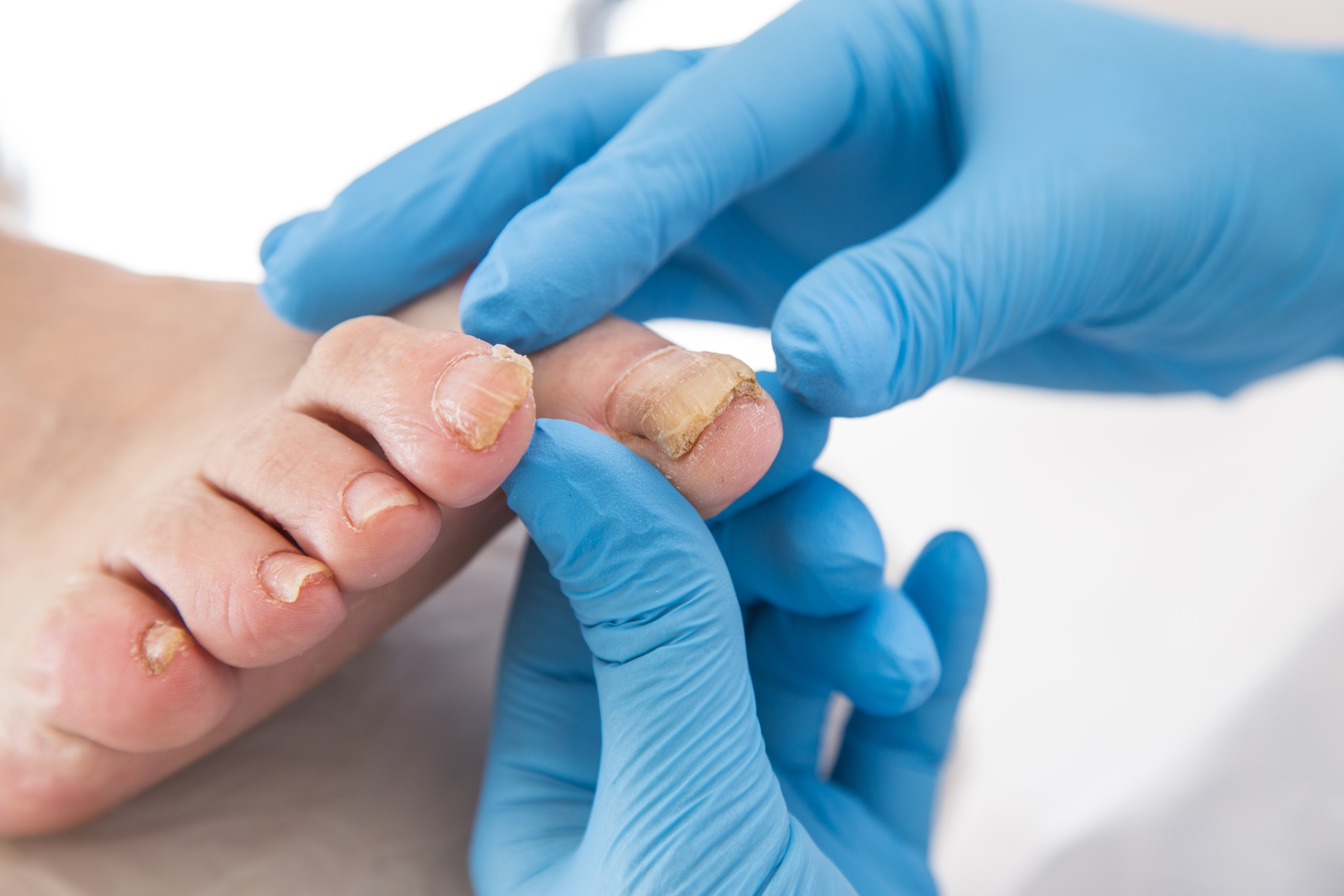
 We know it’s often referred to as ingrown toenail surgery, but honestly – that makes it sound so serious and scary! The truth is that these are very simple and straightforward procedures.
They are done in your regular appointment chair. They are done under local anaesthetic, so it’s painless. The total ‘treatment’ time is normally less than 20 minutes. You have no special precautions beforehand like with other surgeries – you don’t need to fast. In fact, we recommend you eat a good breakfast so that you have a good blood sugar level. In this way, it’s much more like a dental treatment than surgery.
Today, we’re exposing the truth behind Partial Nail Avulsions (PNA) – and why they should not be feared, but looked forward to in terms of the relief you can expect to experience once your pain is gone, and you don’t have to keep putting up with one ingrown toenail after another.
We know it’s often referred to as ingrown toenail surgery, but honestly – that makes it sound so serious and scary! The truth is that these are very simple and straightforward procedures.
They are done in your regular appointment chair. They are done under local anaesthetic, so it’s painless. The total ‘treatment’ time is normally less than 20 minutes. You have no special precautions beforehand like with other surgeries – you don’t need to fast. In fact, we recommend you eat a good breakfast so that you have a good blood sugar level. In this way, it’s much more like a dental treatment than surgery.
Today, we’re exposing the truth behind Partial Nail Avulsions (PNA) – and why they should not be feared, but looked forward to in terms of the relief you can expect to experience once your pain is gone, and you don’t have to keep putting up with one ingrown toenail after another.
Step one: We get you ready, you sit back and relax
When you first come in for your procedure, you have a really important job: Sit back and relax.
We are assuming that you’ve already signed the consent forms, asked every single question on your mind, and are a good fit to have the procedure (like that you don’t have severe circulatory problems that mean you don’t heal). If you haven’t, that’ll be the first step.
We’ll start getting you ready by cleaning and disinfecting your foot and toes. We follow strict hygiene and sterilisation protocols here, so take the time to help you have the best experience with us and your procedure. This is completely painless, and if you’re not interested in watching what is happening to your feet, you may wish to scroll through your newsfeed or catch up on emails.
Step two: We numb your toe
You sit back and relax, we inject anaesthetic through a small, fine needle directly into your toe. You’ll feel a short-lived pinch, and then we’ll wait five or so minutes for the numbness to take full effect. We’ll feel around your toe, making sure that you definitely can’t feel any sensation. Once you give us the all-clear, we start the procedure!
Step three: Goodbye, small piece of ingrown toenail
Your procedure starts with us wrapping a ring around the toe (tourniquet) so that it doesn’t bleed when we do our thing. Next, we’ll cut your nail, in the corner where the nail has ingrown, and remove it from the corner using fancy sterilised equipment.
We need to emphasise: This is not half your toenail, or even a quarter. It is a small sliver of nail, close to the nail edge. Your nail will not look disfigured or unusually small. Normally, it is unnoticeable until you point it out to a friend, in which case their response is something along the lines of “Oh, yeah, I can see that the edge of that nail is very straight”. We keep your cosmetic appearance in mind, so only remove as much nail as we need to to get the job done well
Step four: Making it permanent
If you’ve opted for a permanent ingrown toenail treatment, this is the step where we’ll apply a chemical to the base of the nail to destroy the nail growing cells. Without nail growing cells in that nail edge, the goal is that the nail won’t grow back.
We’ll flush the chemical out after 90 seconds, and then we’re almost done!
Step five: We wrap your toe up
It’s time to dress your toe. We’ll apply an antiseptic ointment or two to the area, dress it well using sterile dressings, and run you through the do’s and don’ts until we see you in a few days’ time.
Step six: Goodie bag!
We give you a goodie bag to take home, filled with dressing materials and written instructions (because people forget easily, and we understand). Alternatively, we may give you your goodie bag at your next appointment.
Step seven: Your 2-3 day check
Two or three days after the procedure, you come in and we check how your toe is looking and that everything is progressing as we’d expect. We’ll redress your toe, and teach you the right way to do it using the materials in your goodie bag.
That’s it.
You’ll be redressing your toe for the next week, following instructions, and you may see us again one more time, but that truly is it. Nothing scary, or nerve-wracking. Yep, the anaesthetic can be unpleasant if you dislike needles, but it’s so short-lived that it’s over before you know it.
If you’ve been battling recurring ingrown toenails and want a permanent solution – book in with our experienced podiatry team by clicking here or calling us on (09) 523 2333.
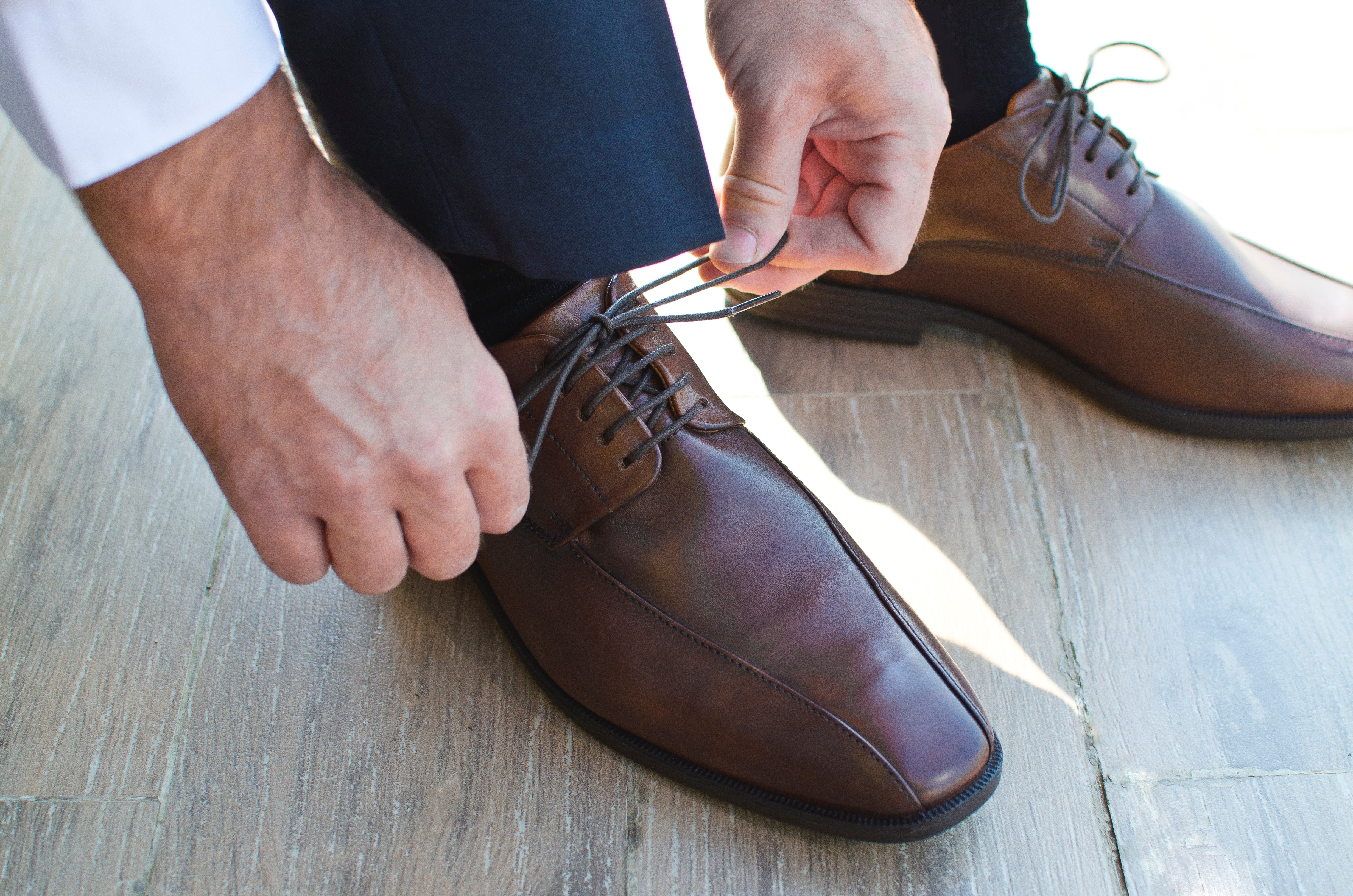
If you aren’t already aware: tight, narrow and poorly-fitting footwear is a major cause of ingrown toenails for young and old alike. Other major causes include:
- Improper nail cutting technique (curving the sides of the nail or ‘picking’ the nails off instead of cutting them
- Genetic predisposition (the shape of the toenail or the thickness of the skin surrounding the nail)
- Damage to the nail (dropping something on the nail or stubbing your toe)
But WHY and HOW do shoes cause ingrown toenails?
It’s pretty simple really:
1. Your foot and toes are crammed into a shoe that is too tight or narrow
2. The pressure on the side of your big toe pushes the skin on the sides of the nail into the nail
3. The close proximity of the skin and nails means that the nail pierces the skin
4. Ouch! Pain, swelling, redness (and sometimes a little bleeding)
5. The swelling means that the nail and skin are now in even closer proximity and the nail will continue to push into the skin
6. As long as there is the ‘cut’ (open wound), the toe is vulnerable to infection
7. An infection will cause further swelling and pain, making it even worse
8. The cut where the nail pierced the skin will not be able to heal until the nail is no longer present in the skin
 Makes sense, right?
Makes sense, right?
Now let’s quickly touch back on all-important point number 8. If any part of the nail continues to penetrate the nail – or even move inside when you take a step and push your toes against the ground – then it won’t be able to heal or ‘go away its own’.
That’s why it’s so important to have the nail effectively treated to make sure the nail spicule is removed so that the healing process can begin. Until the wound closes, it stays vulnerable to picking up an infection which is a big no-no and can put you at risk of serious (and painful) complications.
Let us help you!
This is where we come in! We’ll remove your painful nail spicule, look at what the cause of your ingrown toenail was and how we can get it to not come back in the future. Yay! We see so many ingrown toenails every day that this has become our specialty and we make the process as easy and stress-free as possible.
You can get in touch with our team by calling 09 523 2333. We’re happy to answer any questions you may have. You can also book in online by clicking here. And in the meantime, if you’re prone to getting ingrown toenails, please be mindful of wearing tight, narrow or ill-fitting footwear and just stay clear of it!
– The Auckland Ingrown Toenail Team
 We have the pleasure of seeing and treating a lot of ingrown toenails. That’s not sarcastic at all – successfully treating ingrown toenails provides an immense amount of relief to suffering patients and using our skills to do this successfully is something we’re very proud of.
There’s a common theme to many of the first visits we have with our patients, however, that we thought we’d shed some light on in case you happen to find yourself in this boat too. This theme is the I-googled-it-so-it-must-work home remedies for ingrown toenails.
Now, don’t get us wrong. Some of the strategies you try may well alleviate your pain and have you feeling much better. There’s almost always a catch though: It’s temporary.
We have the pleasure of seeing and treating a lot of ingrown toenails. That’s not sarcastic at all – successfully treating ingrown toenails provides an immense amount of relief to suffering patients and using our skills to do this successfully is something we’re very proud of.
There’s a common theme to many of the first visits we have with our patients, however, that we thought we’d shed some light on in case you happen to find yourself in this boat too. This theme is the I-googled-it-so-it-must-work home remedies for ingrown toenails.
Now, don’t get us wrong. Some of the strategies you try may well alleviate your pain and have you feeling much better. There’s almost always a catch though: It’s temporary.
Repeated ingrown toenail occurrence
The unfortunate truth is that if you’ve suffered from the terrible pains of ingrown toenails more than once, the reality is that you’re almost definitely going to suffer from them again. One-off ingrown toenails absolutely do occur, but the cause is usually a particular pair of tight shoes that push the nail into the skin and they don’t tend to occur again after you’ve stopped wearing them. Repetitive ingrown toenails are the best indicator that there’s something going on, that the nail has now started growing in an abnormal way that ends up penetrating the skin, and that it’s going to continue to happen.
So, why advise against home remedies?
The first reason is that without knowing exactly what you’re doing, you could be further encouraging the nail to continue to grow in a way that will cause you a tremendous amount of pain.
Take the way your nail is cut, for example. If you think that cutting down into the corner and removing the piece of nail will discourage it from growing there again – the reality is the exact opposite. Curving down and removing that painful nail edge will likely encourage the nail to keep curving a growing down – unless you know what you’re doing and understand the characteristics of nail growth.
The second reason is that as health professionals, we don’t want you to suffer with ongoing pain. Experiencing pain every 3 months from an ingrown toenail isn’t a great solution in our opinion, and especially not when you can have a one-time permanent procedure that will have you saying goodbye to ingrown toenails for good.
So, what is this procedure?
The procedure we’re talking about is called a partial nail avulsion (PNA). It involves removing a small part of the nail (the part that causes you pain!) and applying a chemical that will stop that small portion of nail from growing back and continuing to cause you grief, over and over again.
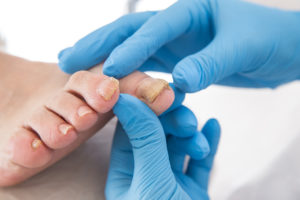 We love this procedure because:
We love this procedure because:
- It’s done simply and effectively in-clinic
- It’s completed in 60 minutes (with the procedure time typically around 20 minutes)
- It’s performed under local anaesthetic so is pain-free
- You do not need to take any additional time off work/school following the procedure & can go home immediately
- You don’t need any special boots or braces while the toe heals
- The procedure causes very little post-procedure discomfort
- We dress your toe, provide you with a take-home dressing pack & re-dressing instructions
- We monitor your progress to ensure it’s healing well
While we perform conservative one-off care for first-time ingrown toenails or those with a definitive cause that is not likely to recur, the PNA is our best recommendation for those that are repetitively putting up with and suffering from ingrown toenails. We have tremendous success with the procedure and have prevented hundreds of patients from continuing to regularly suffer. Our team are experts when it comes to ingrown toenails and we love seeing the difference that having this procedure makes in the lives of our patients.
For more information about the PNA procedure, click here. To book an appointment, you can give us a call on 09 523 2333 or book online.





 We know it’s often referred to as ingrown toenail
We know it’s often referred to as ingrown toenail 
 Makes sense, right?
Makes sense, right? We have the pleasure of seeing and treating a
We have the pleasure of seeing and treating a  We love this procedure because:
We love this procedure because: